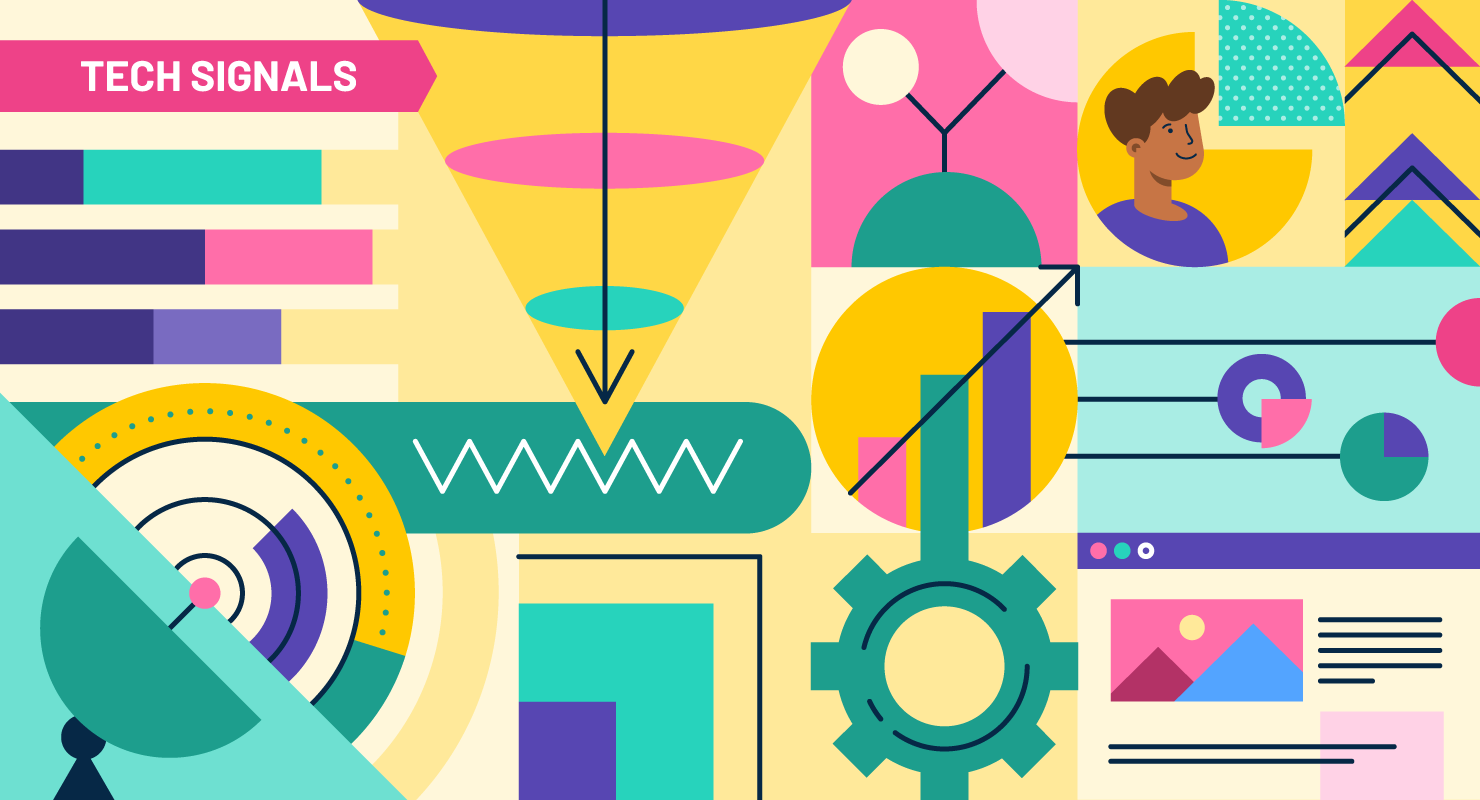May 8, 2024
 by Kamaljeet Kalsi / May 8, 2024
by Kamaljeet Kalsi / May 8, 2024

Key takeaways:
What visual do you imagine when you hear “customer experience”?
Most of you probably thought of the last bad one you had rather than the tenth good one from two weeks ago. You may relate to this unconventional analogy: picture the perfect customer experience as a shape-shifting unicorn. Everyone wants it, but no one has it (not even the tech giants).
However, in the quest for this elusive unicorn, one negative touchpoint has the power to overshadow the entire customer experience. It disproportionately polarizes the experience from delightful to disappointing, leading to negative brand perception and the risk of losing future customers, especially if an unhappy customer shares bad reviews.
This risk is why AI has become mission critical in capturing the unicorn of customer experience: driving efficiency and scaling success. Businesses deploy AI to facilitate recommendations, customer education, support, and sales - either by complementing their existing customer experience tech stack or completely replacing it.
But what they have failed to do is build AI into the fabric of customer experiences.
The result? A paradoxical landscape where brands wanted utopia, but what they created was dystopia.
The present reality is skewed. While one brand got trolled for having 1,000 people manually support the “AI” in customer experience, recent news headlines show other brands are doubling down:
So, is the sentiment toward AI investments still positive? Or is seamless customer experience using AI just a distant dream?
Let’s scan the industry outlook and take you to G2’s AI City and further down the conversational intelligence alley to distill the complexity. Here's how to get ready and not miss this pivotal opportunity to improve customer experience.
According to IBM’s latest report, customer experience strategy tops the list as a change agent for the next two years. However, companies are unprepared for AI. Even though three-fourths of business leaders anticipate AI will transform customer experience, many see it as a huge challenge that adds to the complexity of a changing world.
Source: IBM’s AI-enhanced customer experience
A closer look shows that the top three challenges executives face are integrating AI with existing tech, finding the right AI software to meet business needs, and regulatory concerns.
Source: IBM’s AI-enhanced customer experience
Recognizing these challenges, it’s clear that navigating the complexities of AI adoption is no simple feat for executives. Every once in a while, everyone needs a little help, don’t they? Let us help you get that roadmap right because AI doesn’t have to be scary.
G2 has 21 AI categories featuring 1,078 AI vendors, 1,232 AI products, and 37,823 buyer reviews. To correlate this data, our VP of Market Research, Chris Voce, and his team shared a lucid visualization called the G2 AI City.
Before we proceed and connect the dots, imagine this is NYC (but with AI), and you’re the customer touring this city.
The colors represent AI software categories, a.k.a the neighborhoods. The building height represents the number of software products stacked in that respective category.
The heatmap above shows AI chatbots as one of the hottest neighborhoods marked in yellow, orange, and red. Because chatbots connect with CRM, automation, customer analytics, insights tools, and social media management tools — it’s safe to call it the Times Square of AI City.
If you’re a customer visiting AI City, chatbots are the agents that will convert you from a visitor into a long-term neighbor by creating a valuable customer experience. And we know happy neighbors advocate for their neighborhood, leave good reviews, and bring more friends to the block party!
Tying in the G2 AI City and NYC reference, how can we not mention skyscrapers?
AI sales assistant is the tallest skyscraper on the block but, ironically, isn’t a hotspot in AI City. Meaning that AI sales assistant software has the most vendors but not a lot of takers. Surprised? Let’s analyze why this is the case.
While AI sales assistants and AI chatbots both aim to enhance customer experience with AI-powered help, they differ in their approach. Sales assistants optimize sales tasks, whereas chatbots engage customers directly.
What gives chatbots an edge is:
The table below gives a comparison snapshot of AI sales assistants versus AI chatbots to help you draw your own observations.
|
Feature |
AI sales assistants |
AI chatbots |
Quick insight |
|
Core function |
Automate sales tasks such as scheduling, follow-ups, data entry |
Instant customer support and engagement via messaging |
Chatbots excel in immediate customer engagement |
|
Interaction level |
With sales teams to streamline tasks |
Directly with customers for inquiries and assistance |
Chatbots are frontline, facilitating direct customer interaction |
|
Use cases |
Sales forecasts, CRM updates, email automation |
Customer service, live chat, product recommendations |
Chatbots offer versatile customer service applications |
|
Complexity |
Deeper learning for sales strategies |
Pattern recognition for real-time interactions |
Chatbots employ straightforward technology for effective communication |
|
Integration |
Sales and marketing platforms |
Customer-facing platforms like websites and social media |
Chatbots are integrated into platforms where customers are present |
|
Goal |
Enhance sales performance |
Improve customer experience and service accessibility |
Chatbots are geared towards elevating the customer experience |
|
Commonalities |
AI-driven, data insights, CX focus, engagement, scalability, 24/7 availability |
Same as AI sales assistants |
Both systems leverage AI for improved interactions and productivity |
|
Personalization |
Based on sales behavior |
Based on customer interaction and data |
Personalized experiences are central to both, albeit in different contexts |
|
CRM interaction |
Frequent |
Occasional |
AI sales assistants may have a deeper CRM integration than chatbots |
G2's Vice President of Market Research, Chris Voce, shared his insight on the matter.
“The rapid advancement in generative AI over the past 18 months offers businesses powerful new tools to foster better customer experiences. AI chatbots, backed by increasingly powerful LLMs, can be applied to engage customers directly.”
Chris Voce
Vice President of Market Research, G2
He further elaborated the value add that AI chatbots bring to customer experience through people empowerment.
“AI chatbots can be an incredible asset to customer experience teams, always eager to leverage new information for meaningful improvements in customer service. These systems boost productivity by processing large quantities of data, both structured and unstructured, helping teams uncover valuable information about customer journeys and enhancing the overall customer experience.”
Chris Voce
Vice President of Market Research, G2
Talk is cheap, and chatbots are expensive. To help you see the value AI chatbots bring to customer experience and leap into its strategic planning and execution, here are some use cases.
While industries, such as healthcare, plan to deploy chatbots in the next two years, IBM identifies financial services and banking as the top industries that use chatbots to enhance customer experience.
Bank of America sought to enhance its digital banking convenience by providing over 37 million clients with a powerful financial management tool. Erica, an AI-driven virtual assistant, was developed to personalize, simplify, and respond to a growing demand for accessible and intelligent customer service.
Introduced in 2018, Erica leveraged controlled AI to provide real-time, personalized financial guidance and support. The AI chatbot was meticulously designed to meet a plethora of customer needs — from conducting transactions and tracking spending to intelligent call routing for intricate financial queries.
The advanced tool harnesses proprietary, vetted data to furnish a secure, intuitive interface. According to David Tyrie, chief digital officer and chief marketing officer at Bank of America, what sets Erica apart is its controlled AI, which is a primary gateway to scaling personalization.
Source: Bank Of America
As of April 2024, Bank of America has executed over 50,000 upgrades to Erica's capabilities.
Over five years, Erica has processed over two billion interactions and has served over 42 million clients, from tracking spending to monitoring subscriptions. It has cemented itself as an invaluable tool for simple and complex financial tasks, empowering customers on numerous platforms. Erica consistently delivers personalized support quickly, with an average 98% success rate of providing answers within 44 seconds.
Source: Bank Of America
Facing the dual challenge of enhancing customer service and handling high inquiry volumes, ING recognized the need to upgrade its engagement through groundbreaking AI technology.
The objective was to reduce customer wait times and improve the resolution rate by launching a sophisticated AI chatbot that delivers immediate personalized assistance, thereby setting a new customer service standard within the banking industry.
ING, in collaboration with QuantumBlack, McKinsey's AI arm, accelerated the development of a bespoke generative AI chatbot within a remarkable seven-week timeframe.
The solution incorporated a meticulously designed multi-step pipeline that provided tailored responses to customer queries, featured the ability to offer multiple solutions for consideration, and implemented strict risk mitigation guardrails.
The chatbot harnessed a combination of knowledge retrieval from expansive data stores and an intelligent ranking system to propose the most helpful responses. ING used QuantumBlack Labs' innovative tools to create custom guardrails that adhered to ING's stringent standards and industry-specific regulations.
Since its launch in September 2023, the gen AI chatbot represented a substantial leap forward in user experience. In its initial seven weeks, the AI assistant assisted 20% more customers compared to its predecessor, expediting query resolution. This success has helped ING foresee a future reduction in call center load.
ING strengthened over 50 support functions, including their risk, contact center, analytics, and technology departments. This strategic move enabled the company to scale up its generative AI initiatives significantly.
The ING and McKinsey partnership set the groundwork for a scalable model that other ING countries can adopt and implement. This technical foundation is capable of addressing a wide array of generative AI use cases across the ING Group. These endeavors laid down a blueprint for scaling the solution across 10 markets, which could influence the customer service experiences of more than 37 million customers in 40 countries.
Source: McKinsey & Company
The software buying experience is complex and riddled with a lot of layers, technical jargon, and a labyrinth of listings. Though customers entering the vast landscape often know what problem they want to solve, they don’t necessarily know how to identify the right tool for it.
To address this gap, we innovated Monty, an AI-driven assistant, to transform vague customer inquiries into targeted product recommendations. The goal was to guide without overwhelming.
Tim Silber, Product Manager at G2 Labs, shed light on Monty's initial role in reshaping the buyer's journey, "When a buyer doesn't know where to start, we take their unstructured ideas and requirements and let Monty sort through the hundreds of thousands of products."
Built on ChatGPT’s LLM, a strong prompting strategy, and G2’s existing site content, Monty soon evolved from a simple support chatbot that recommended products into a multifaceted AI sales representative that engages high-intent buyers and guides solution discovery.
To unlock this capability, the team aligned AI's functions closely with customer needs and plugged it into the G2 knowledge base. Tim highlighted that customizing the LLM, prompts, and content fueled Monty's effectiveness.
These differing elements further allowed Monty to cater to specific objectives across product recommendations, support, and sales.
Monty could maintain a coherent conversation across different scenarios and also integrate product listings and visuals in the chat. These overlaps gave customers a 360-degree view of G2’s offerings, especially while assisting marketing leaders who need a nuanced understanding of the products they evaluate.

Every Thursday, we spill hot takes, insider knowledge, and news recaps straight to your inbox. Subscribe here
Tim commented, “Monty became capable of handling customer and vendor requests, which led to us discontinuing live support chat in favor of Monty's capabilities. With an 80% case deflection rate, we've seen great success. We've also created an AI bot creation platform to adjust Monty's strategies and improve conversation handling.”
The team overcame AI-specific challenges like hallucinations by:
Data-driven personalization made Monty likable, familiar, and engaging. The team used zero and first-party data to give it contextual cues. Tim also shared that his team constantly works on using G2’s existing technology stack to improve Monty's integration and accelerate product development.
A flexible and iterative approach allows for rapid evolution, adaptation to user feedback, and fine-tuning to align with customer behavior patterns.
The implementation of Monty highlighted a surprising insight. G2 buyers actively use Monty to guide their journey.
“We've found that users prefer talking to AI for a low-stakes conversation rather than a human representative, eliminating the pressure of sales follow-ups.”
Tim Silber
Product Manager, G2 Labs
This readiness is a testament to Monty's user-friendly design, practical functionality, and the growing trust in AI's capacity to deliver.
Monty, Erica, and ING’s success stories are testaments to the integral role of AI chatbots in customer experience strategy.
Taking a leaf from each use case, trust your learnings:
Implementing AI can get too complex too soon. These actionable steps can transform AI from a mere tool into an essential ally for exceptional customer experiences. Happy unicorn hunting!
If you enjoyed these souvenirs from your trip to G2’s AI City with Monty, subscribe to the G2 Tea newsletter for the latest tech and marketing thought leadership.
Kamaljeet Kalsi is Sr. Editorial Content Specialist at G2. She brings 9 years of content creation, publishing, and marketing expertise to G2’s TechSignals and Industry Insights columns. She loves a good conversation around digital marketing, leadership, strategy, analytics, humanity, and animals. As an avid tea drinker, she believes ‘Chai-tea-latte’ is not an actual beverage and advocates for the same. When she is not busy creating content, you will find her contemplating life and listening to John Mayer.
AI search isn’t just an evolution of Google — it’s a revolution in buyer behavior.
 by Kamaljeet Kalsi
by Kamaljeet Kalsi
Brand is having a glow-up, and AI is the glam team behind it.
 by Kamaljeet Kalsi
by Kamaljeet Kalsi
At the Paris AI Action Summit in February, cracks around AI governance surfaced for the first...
 by Sidharth Yadav
by Sidharth Yadav
AI search isn’t just an evolution of Google — it’s a revolution in buyer behavior.
 by Kamaljeet Kalsi
by Kamaljeet Kalsi
Brand is having a glow-up, and AI is the glam team behind it.
 by Kamaljeet Kalsi
by Kamaljeet Kalsi


